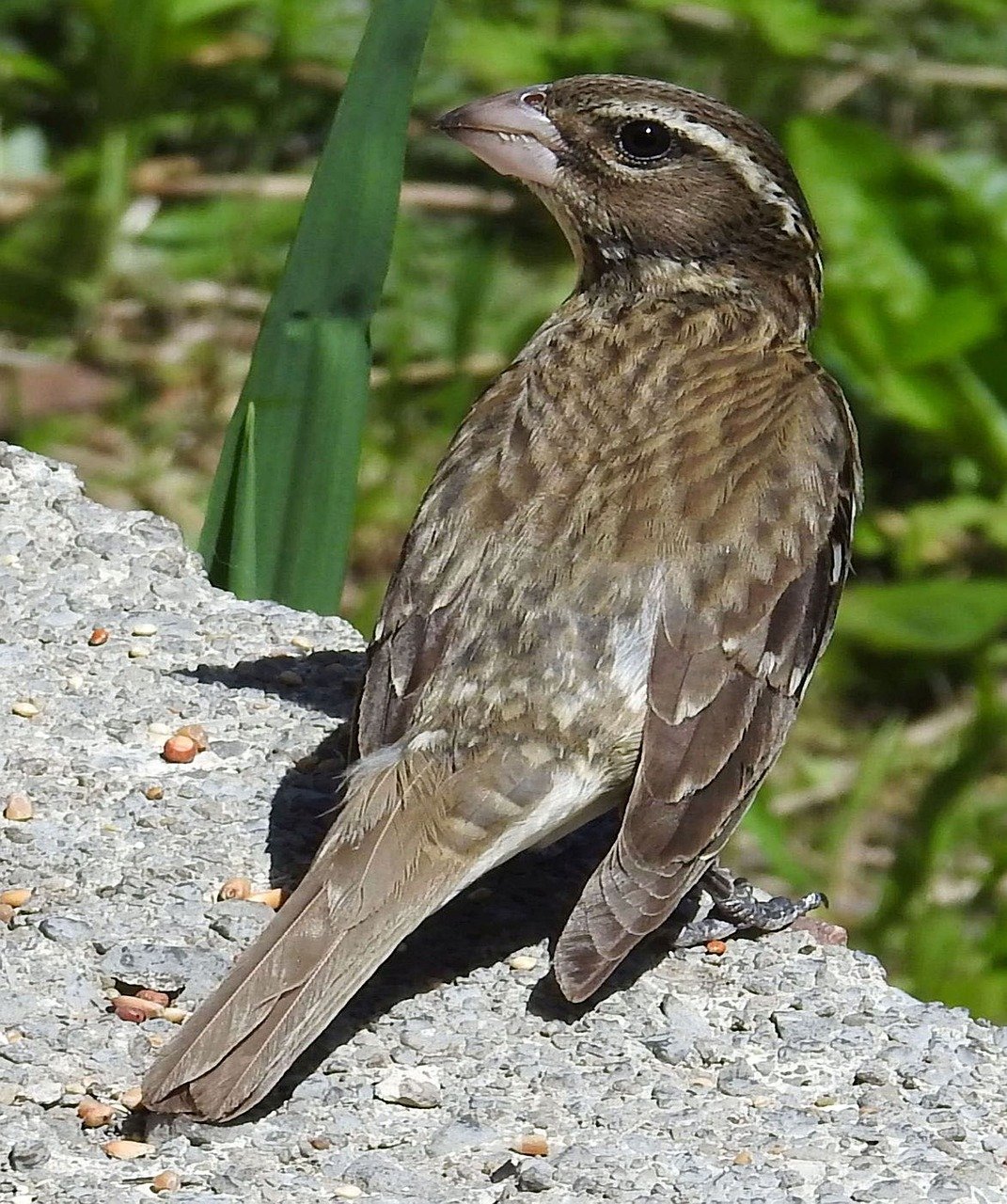Some birds hammer away in song through the dog days of summer, blending into the long and hot afternoons with repetitive phrases. Common Yellowthroats and Dickcissels come to mind as gritty and persistent birds, driving home their territory when most birds might rest instead. The Rose-breasted Grosbeak, however, seems to sing only on refreshing mornings and evenings.
This bird is cool, almost always fleeting, and has the looks to back it up. Males sport dripping red plumage, with checkered black and white wings while females are brown or olive streaked with that massive and distinctive bill. The Rose-breasted Grosbeak always seems voguish, but perhaps too cool—a large beak and vibrant plumage suggest a South American avian resident. I thought my first Rose-breasted Grosbeak had been shot in the chest and was bleeding; I didn’t know such a unique-looking bird could be found in Wisconsin.
A male Rose-breasted Grosbeak with black plumage on the head, a white underside with a splotchy red chest, and thick pale-pink bill (Pixabay).
A female Rose-breasted Grosbeak with streaky brownish-olive plumage along the wings and back, a pale eyebrow, and thick pale-pink bill (Pixabay).
Federal Breeding Bird Surveys have documented significant declines for this species, though they have continued to do well in Wisconsin. Making their way from southern Mexico on through western South America, the bird arrives in late April to early May. Amid the buzz and sparkle of warblers, the Rose-breasted Grosbeak makes a fine study for a sore neck, as the birds often sing from shrubs or sun-canopy trees. Their song resembles a robin’s but is sweeter, clearer, and more musical.
On the first day of the 12-week summer internship at Faville Grove, a performative Rose-breasted Grosbeak followed us all throughout the scattered trees of the Lake Mills Ledge, singing a delightful song from treetop to treetop. You can find this happening bird in forested areas throughout Faville Grove, doing best in areas with large trees and structural complexity.
Written by Drew Harry, Faville Grove Sanctuary land steward
Cover photo by Courtney Celley/USFWS. A male Rose-breasted Grosbeak with black and white plumage, a red mark on the chest, and big beak is perched in a red pine tree.







